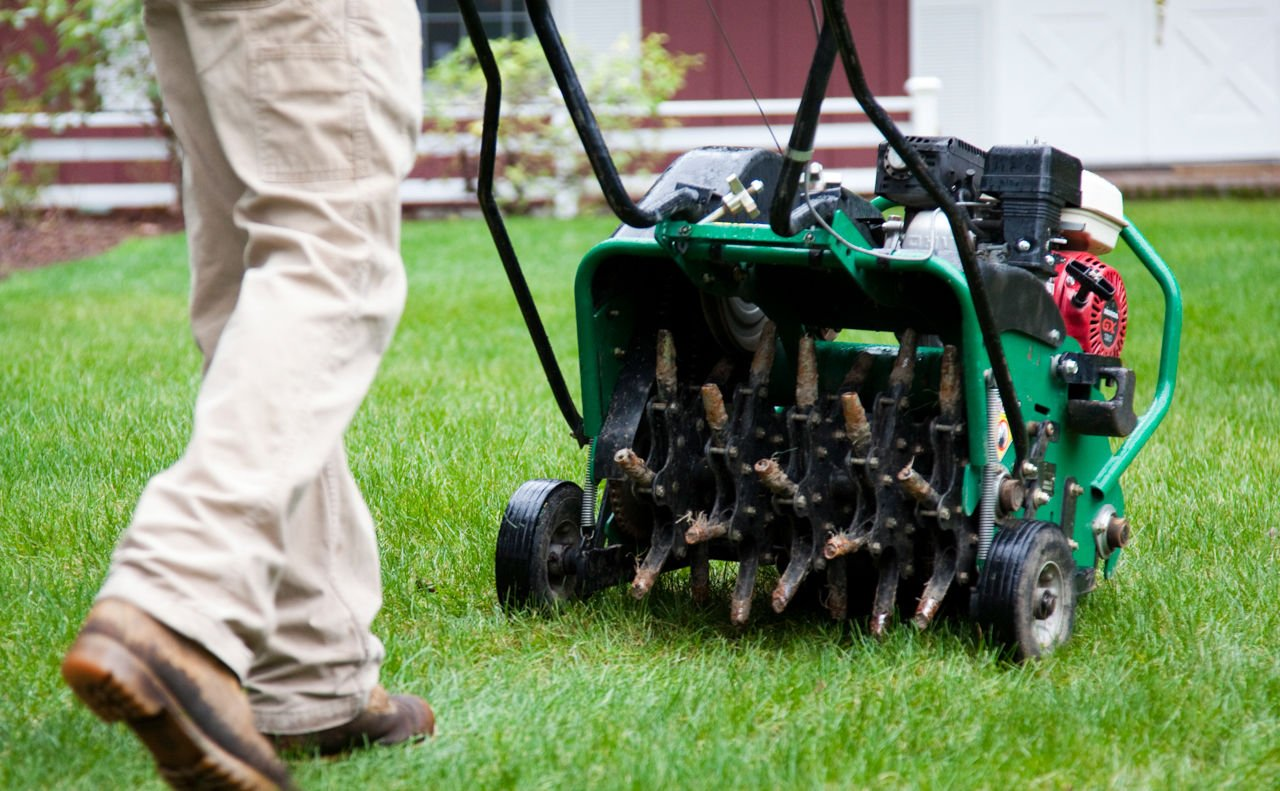Grass bounces back fast after core aeration. Pulling small plugs opens channels so air, water, and nutrients reach roots, which eases thatch and boosts growth. Using a lawn aerator tool with hollow tines sets up clean holes for better seed-to-soil contact and recovery.
This guide focuses on aerating compacted soil at the right time for the grass type. We will share practical healthy lawn tips for thicker blades, richer color, and deeper roots without guesswork.
What is Core Aeration?
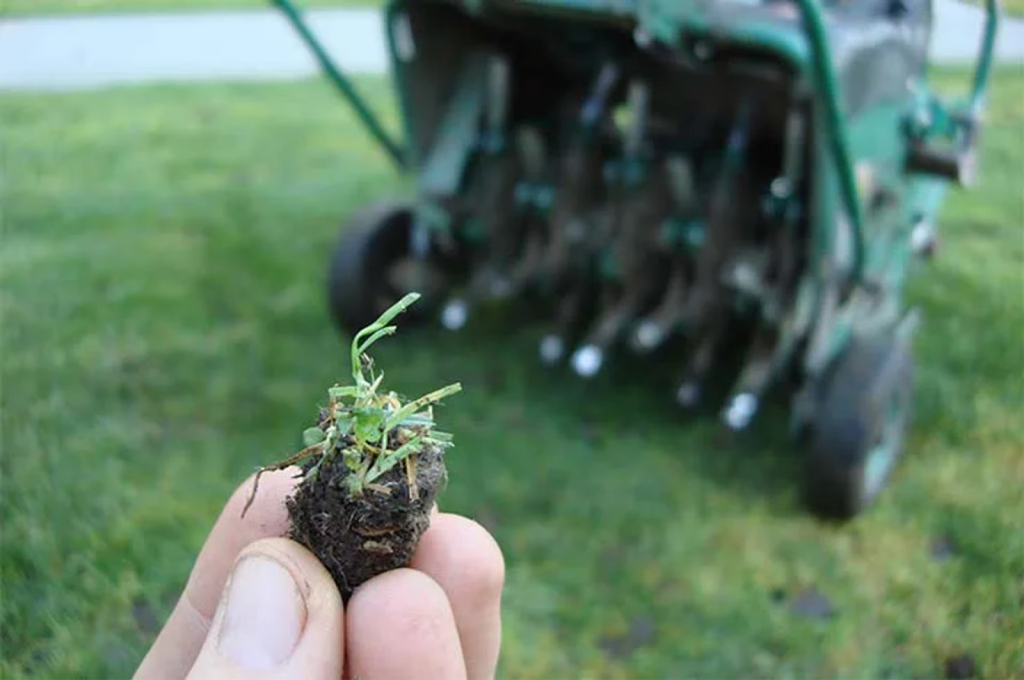
Core aeration punches hollow tubes into turf and pops out small soil cylinders, a method backed by turf specialists. This lawn plug removal cracks compaction so rain, oxygen, and nutrients slip to the roots instead of bouncing off a hard crust.
Here’s how lawn aerators work: hollow tines roll across the yard, lift a plug every few inches, then drop those crumbs on top to break down as free topdressing. After one pass, roots spread deeper, moisture drains better, and grass thickens without extra seed or chemicals.
Author’s Note: Check out our post on Improving Lawn Health with Aeration for a general guide which includes spike aeration and how using either method can create a vibrant and thriving yard!
Benefits of Aerating Your Lawn
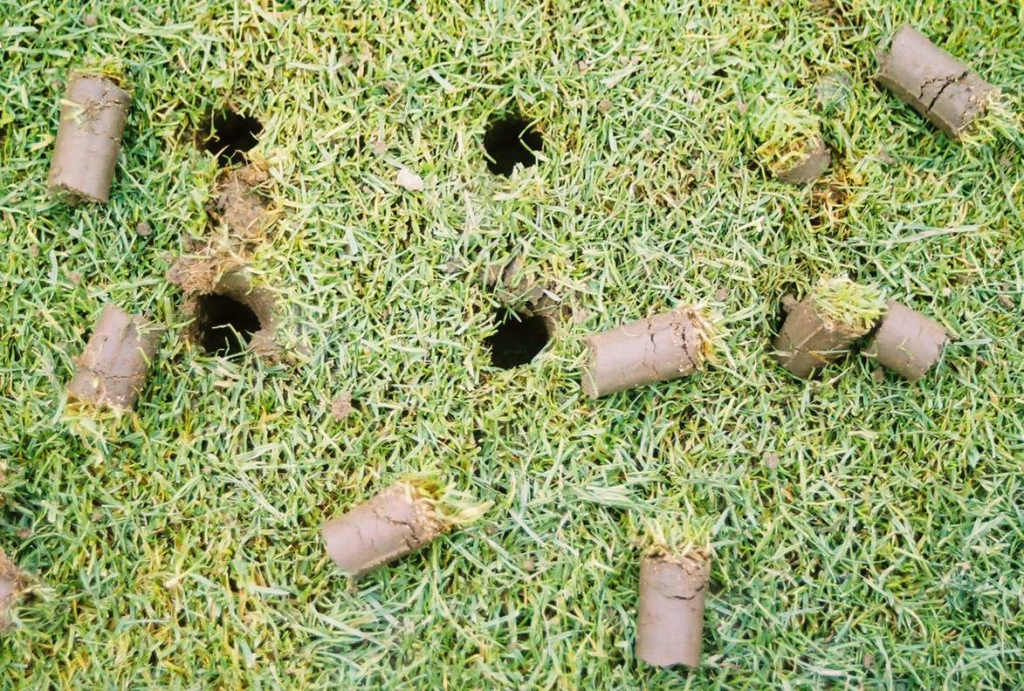
Core aeration pulls fingertip-sized plugs from compact turf, opening channels that let rainfall slip deeper instead of pooling on the surface. Those holes give fertilizer a clear path to the root zone, so nutrients work harder and waste less.
Over the next weeks fresh shoots fill each opening, setting up stronger grass roots that draw moisture during dry spells and resist disease. Thicker turf is a leading sign of the benefits of aerating lawn and shows how regular coring can improve lawn health season after season.
When to Aerate Your Lawn
Early fall suits Kentucky bluegrass, fescue, and other cool-season lawns because soil warmth and cooler air let roots mend after coring and fill every plug before winter. Late spring through early summer pairs perfectly with Bermuda or zoysia growth spurts, so plugs close quickly and turf thickens ahead of summer stress.
Matching lawn aeration timing to active growth minimizes shock, boosts nutrient flow, and marks the best time to aerate each grass type. Folding core work into regular seasonal lawn care keeps compaction low and color bright.
How to Choose a Core Aerator
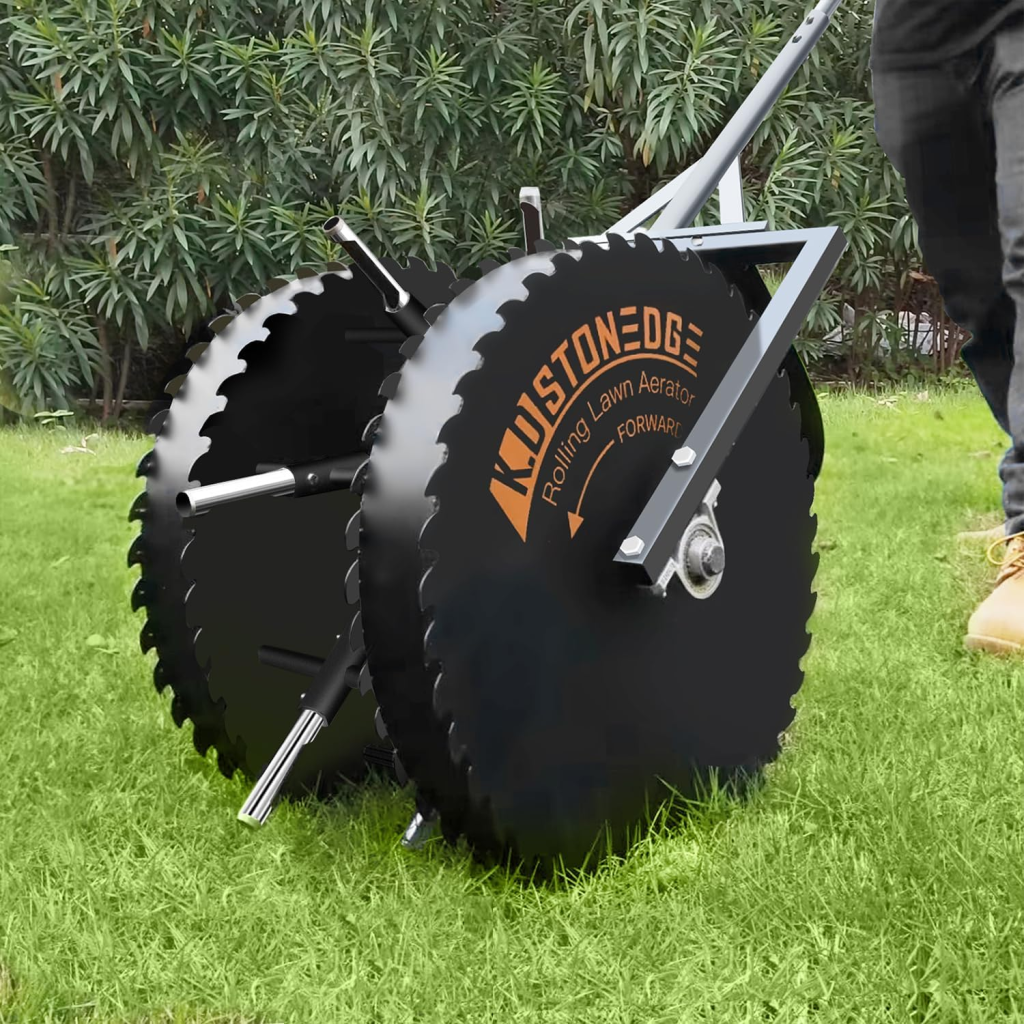
Rolling Lawn Coring Aerator
Choosing a core aerator starts with matching the tool to the turf. Small city yards do fine with step-powered models. It stores easily and suits lighter soil. Mid-size lawns benefit from walk-behind or push units, which is the middle ground in the manual vs motorized aerator decision.
Clay-heavy half-acres or more yards favor tow-behind rigs pulled by a mower, clearing ground fast. When choosing lawn tools, pick hollow steel tines and a frame that takes extra weight for cleaner cores.
Author’s Note: Check out our post How To Aerate Your Lawn Properly for another detailed guide to aeration!
Preparing Your Lawn for Aeration
Setting up a clean runway makes the corer glide. Begin with lawn mowing before aerating. Trimming your grass to about two inches keeps tines from tearing long blades.
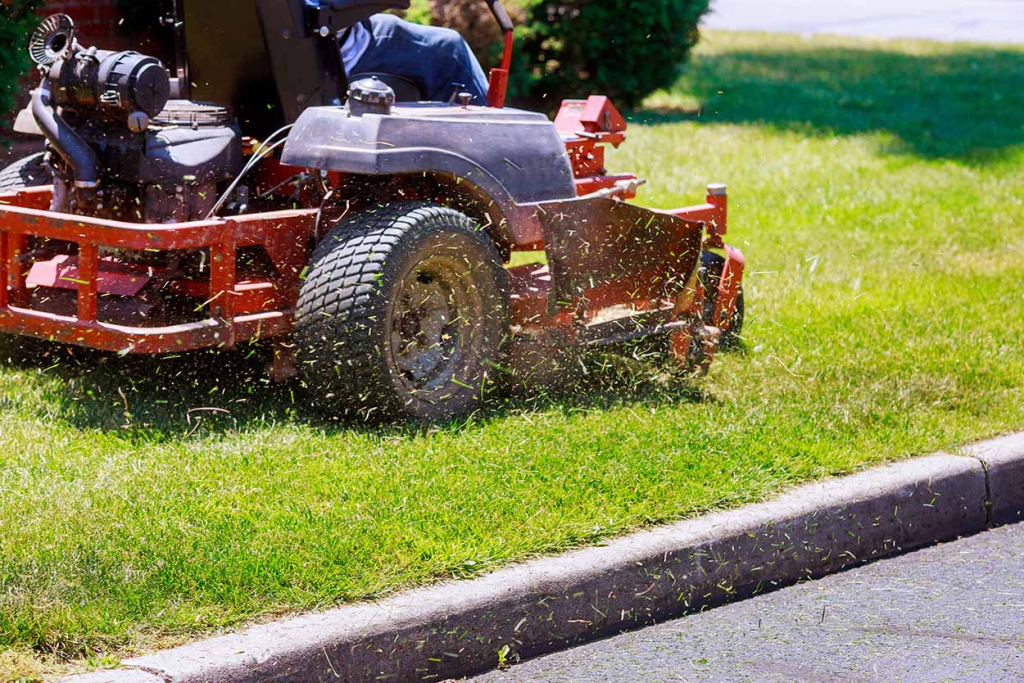
Give the yard a light soak the evening prior so plugs pull cleanly yet the soil stays crumb-free. Flags or spray paint mark sprinkler heads, shallow cables, and stepping-stone edges, keeping the equipment and underground lines safe.
These quick pre-aeration steps complete the essential lawn prep, setting up smooth passes, fewer jammed tines, and deeper channels for oxygen, water, and nutrients.
Step-by-Step Guide to Aerating Your Lawn
Moist soil sets the stage for a smooth aeration process. Run the core aerator in straight lines across the yard, then cross the first set at a right angle for full coverage. Keep tines sinking two to three inches so roots breathe deeply. Those plugs? Leave them to crumble and feed microbes or rake them into bare spots.
Unsure how to use the core aerator on tight clay? Make an extra pass on traffic lanes and water lightly again afterward. This simple lawn aeration technique boosts oxygen, water, and nutrient flow without tearing turf.
Post-Aeration Lawn Care Tips
Fresh cores on the lawn act like open pores, ready for moisture and seed. Water within the first hour to settle soil, then keep it lightly damp each day for a week. That is vital after lawn aeration.
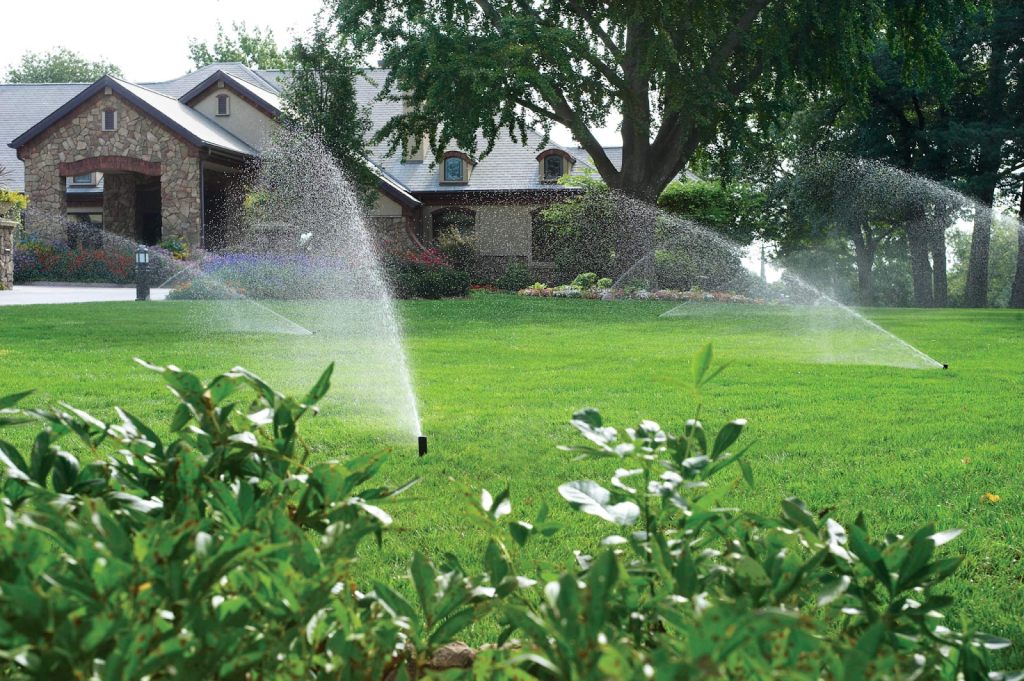
Broadcast seed over thin spots so new shoots root in the holes. Follow with post-aeration fertilizing using a slow-release product within a couple of days to feed seedlings and existing turf. Limit foot traffic until blades reach mowing height. These practical lawn recovery tips lock in thicker, stress-resistant grass.
Common Mistakes to Avoid with Core Aeration
Missing the grass’s active growth window tops the list of common aeration mistakes. Schedule aeration during cool growth periods so turf bounces back well. Aerating dry soil is another problem. Water the lawn ahead of time or wait for rain so tines pull full plugs instead of shallow scratches.
Skipping passes leaves too few holes. Make overlapping runs in different directions for better coverage. Ignoring follow-up care also ranks high among lawn care errors. Leave cores to break down, then overseed and water to avoid lawn damage and lock in the benefits.
Conclusion: The Importance of Aerating Your Lawn
Core aeration lifts plugs, opens channels, and eases compaction so air, water, and nutrients reach roots for thicker turf. Regular passes each spring or fall keep that flow steady, preventing thatch buildup and supporting long-term lawn health even when traffic is heavy.
Over time the soil stays looser, roots grow deeper, and weeds struggle, forming the short list of core aeration benefits every yard deserves.
Pick a core aerator that fits the yard, mark the calendar, and share the greener results in the comments below!

